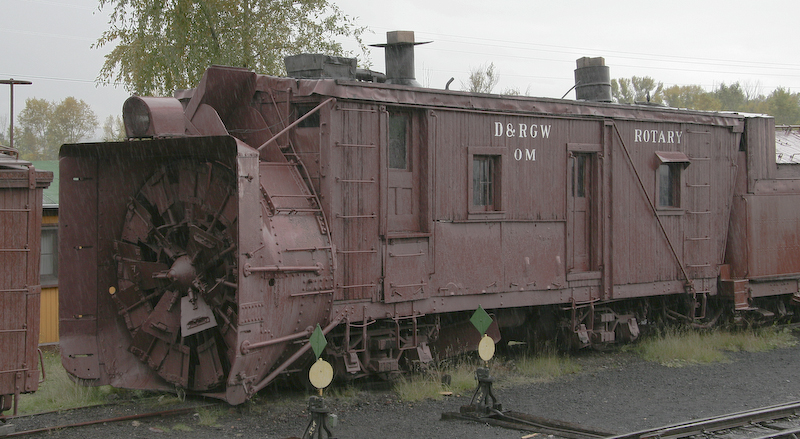
Trip Report: 20070928
One of the key objectives of our road trip was to travel the Cumbres & Toltec steam railroad. This is one of the 2 steam trains that operate in southern Colorado and is reputed to be the most scenic and photogenic of any of the railroads in the area. While that may be true, I have to say that we were quite bummed that the day that we chose to go had rain. Lots of rain. Since the prior 5 days had been warm, sunny and clear, this was a shock. Recall that our trip on the D&SNGRR was rainy as well. We concluded "if train, then rain". While the lighting was poor, and there was lightning on the train, the views were awesome and it was a good trip.
The photos below are what we saw.

This is a steam powered snow blower that was in operation over Cumbres Pass. They get over 30 feet of snow per year on the pass. These snow plows are out of service as the line does not run in the winter.
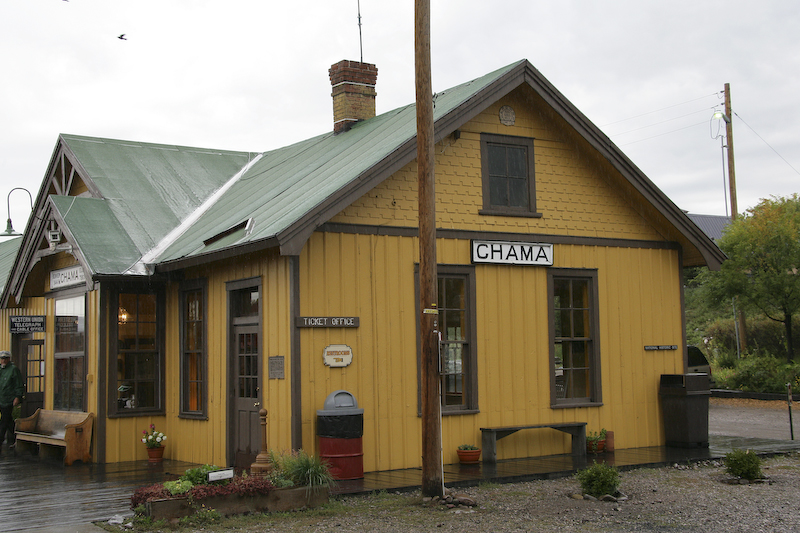
The Chama station is a restoration of the original structure.
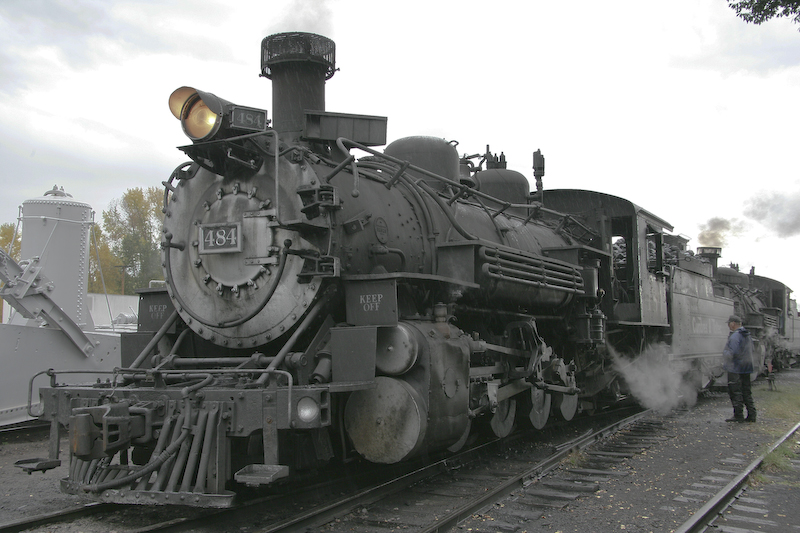
Number 484 is the lead engine for the trip up the grade. 2 motors were required due to the 4% grade. Once on the top, the lead motor will detach and go on to other duties and one motor will take us back to Chama.
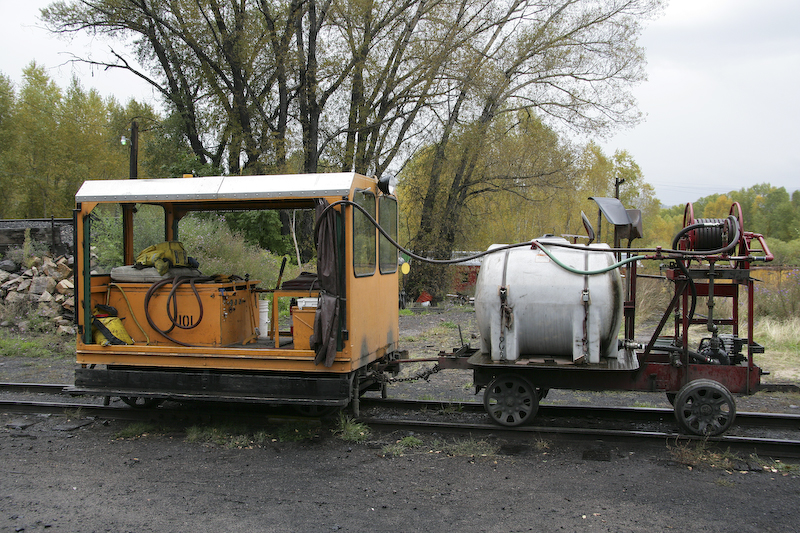
All steam engines throw cinders that can start fires. The fire hazard is so great that it is standard operating procedure to have a fire control "speeder" follow each steam engine to put out any fire that may be started when the engine passes. Here you can see the speeder and the water tanks, pump and hose.
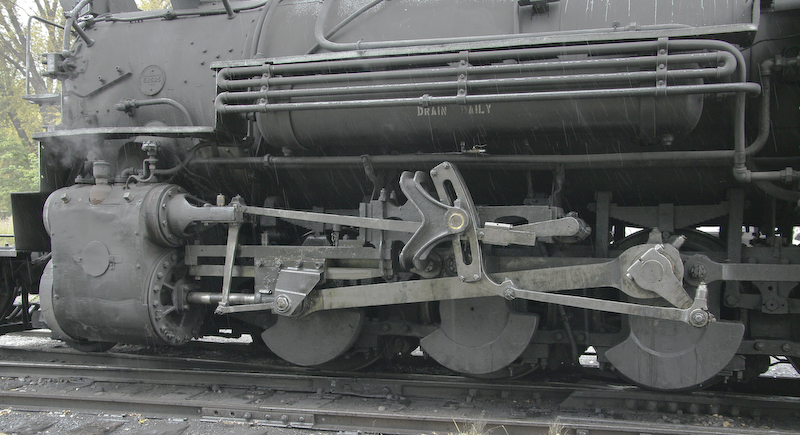
The front of the steam engine is the "business end". The large lump of cast iron on the left holds both the main piston and the valve mechanism. The large number of linkages is to control the steam valves. The main push rods are seen in the center of the photo and are made of the thickest steel as it provides the locomotive power from the piston. Note the counter balances on the wheels to keep the entire mechanism rotating smoothly.
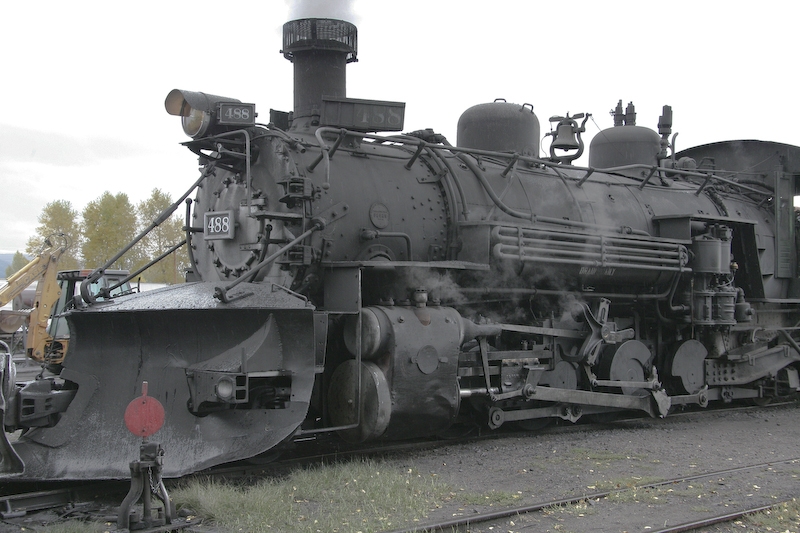
Number 488 is the second motor in the stack and would pull us back to Chama. Note that this motor has a snow plow on the front.
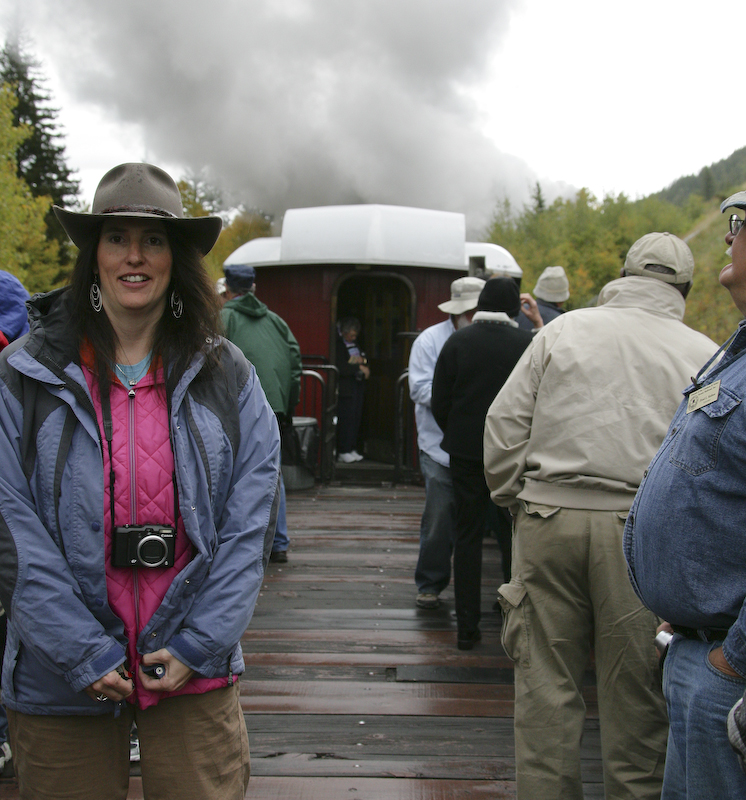
It was still raining hard and the engines were throwing large amounts of cinders and ash. Smoke notwithstanding, Kathleen was enjoying the ride.
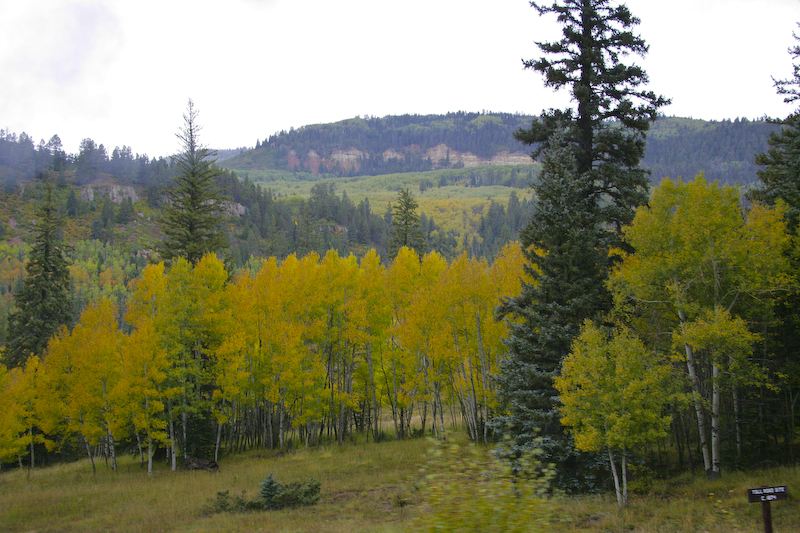
The clouds made capturing colors problematic, but the aspen trees were turning nice colors.
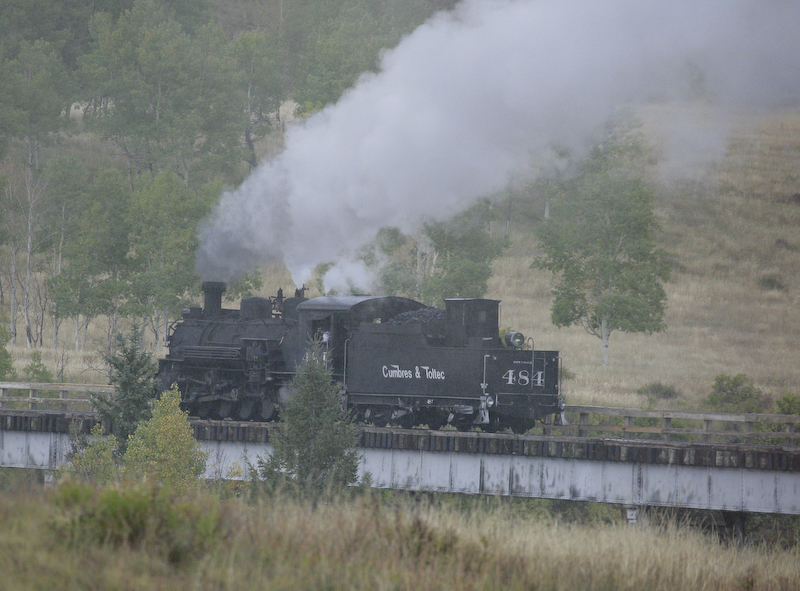
We approached a steel bridge and the load capacity of the bridge was less than the combined weight of 2 engines. So, to cross the bridge, the lead motor had to detach and then rejoin the stack on the other side of the bridge.
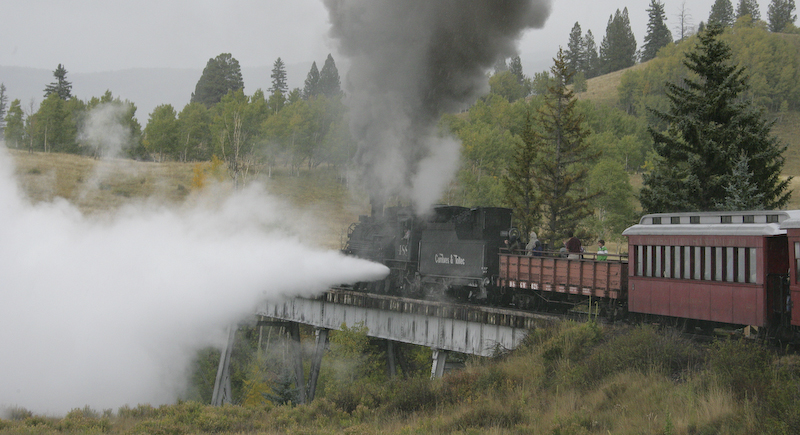
The second motor was working hard pulling all the cars in the stack. Here it is venting steam due to over pressure in the boilers.
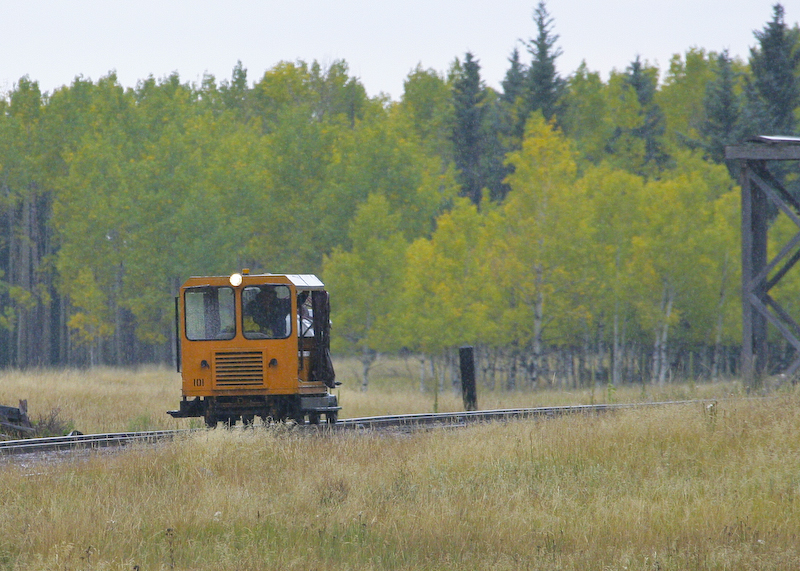
Our fire control speeder is following us looking for cinder induced fires. Given the rain, this is a pretty boring job today.
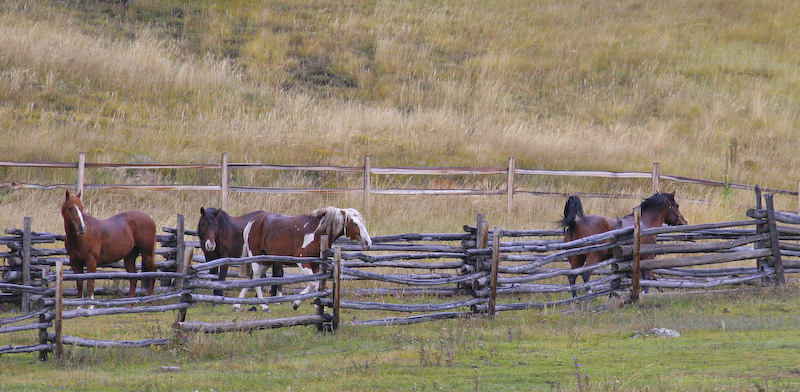
There was a ranch close to the tracks and the locomotives had the stock in a tizzy. Here the horse on the right runs around like a chicken with his head cut off.
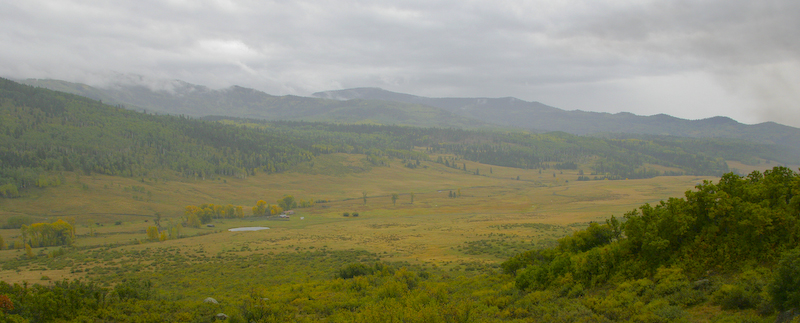
The upper areas outside of Chama had great meadows that were flush with cattle.
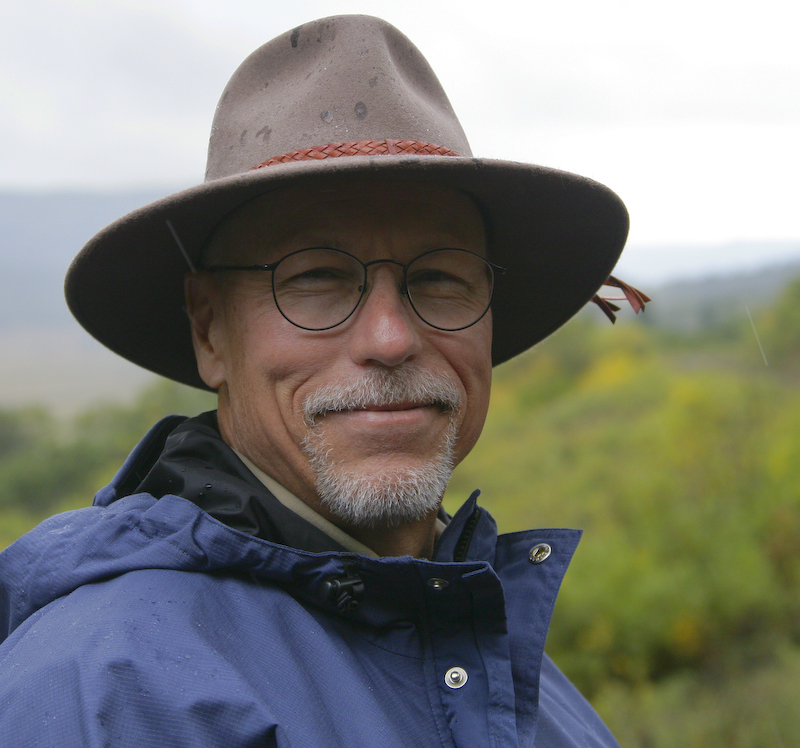
Despite the rain and overcast, I enjoyed the ride.
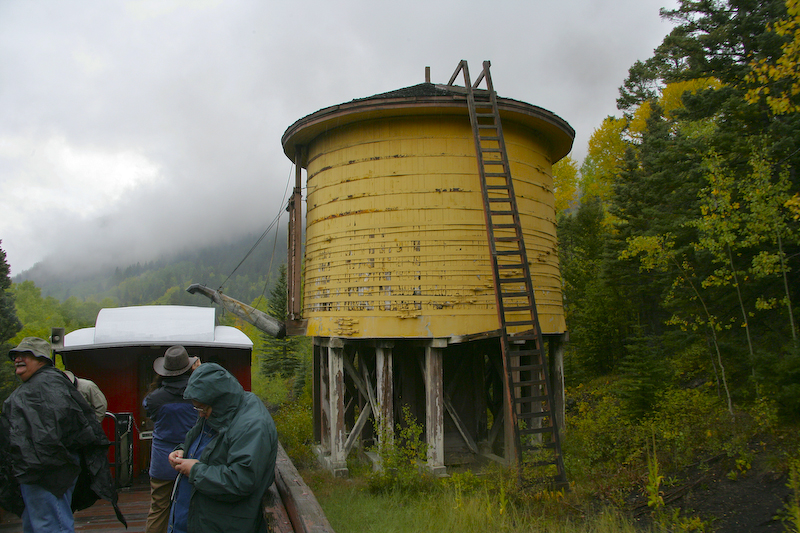
Every 7-10 miles were water towers to replenish the supply in the locomotive.
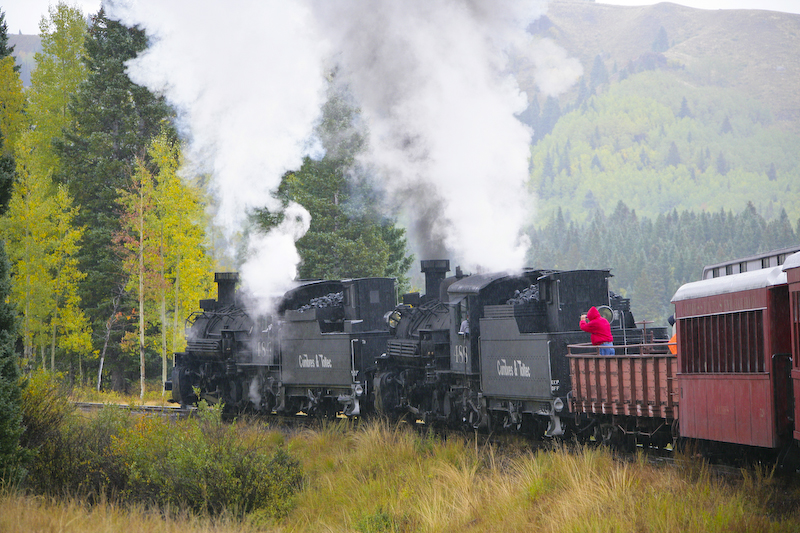
The twin motors were working hard pulling us up the 4% grade out of Chama.
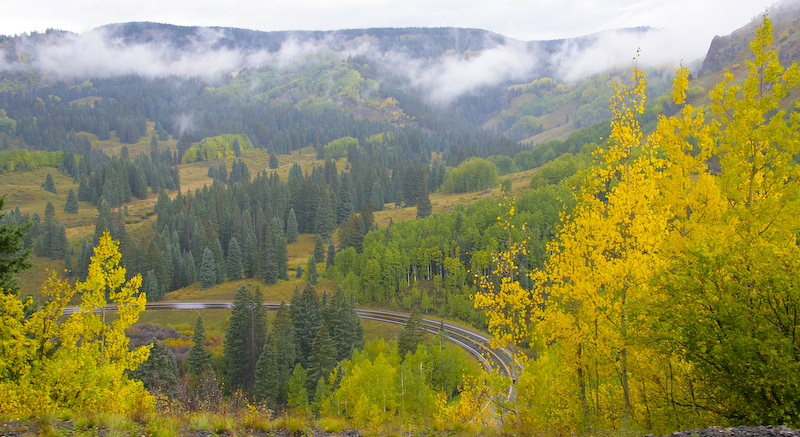
The grades outside of Chama are steep. There were several places where the tracks nearly cross one another due to the grade.
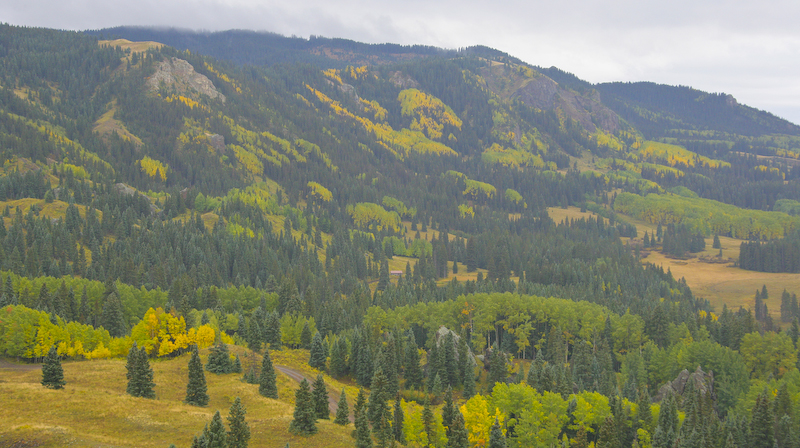
The aspens were looking good, but the cloudy skies were problematic.
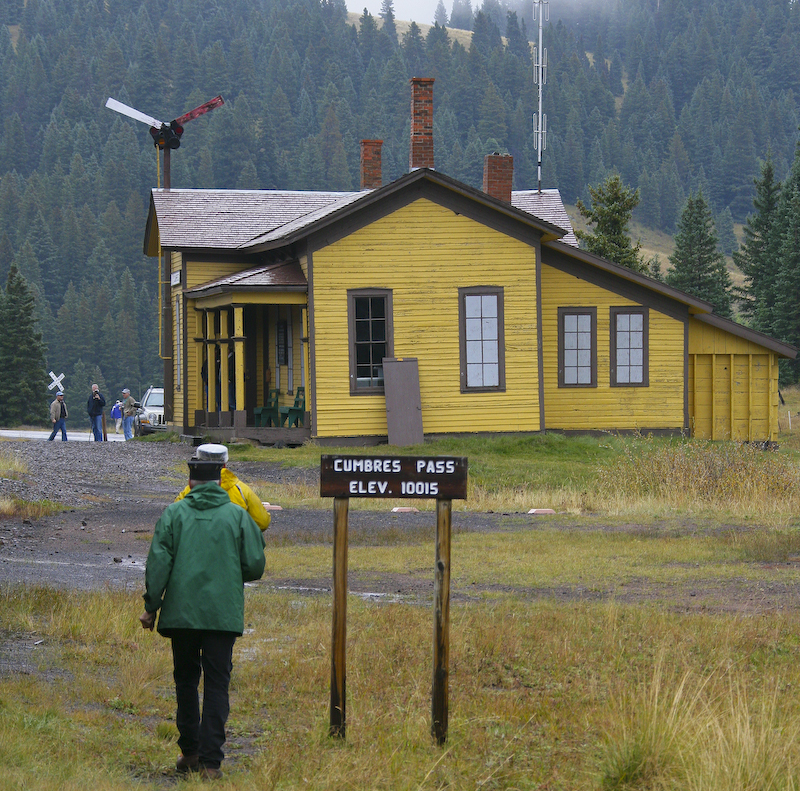
We finally reached Cumbres Pass at 10,015 feet above sea level.
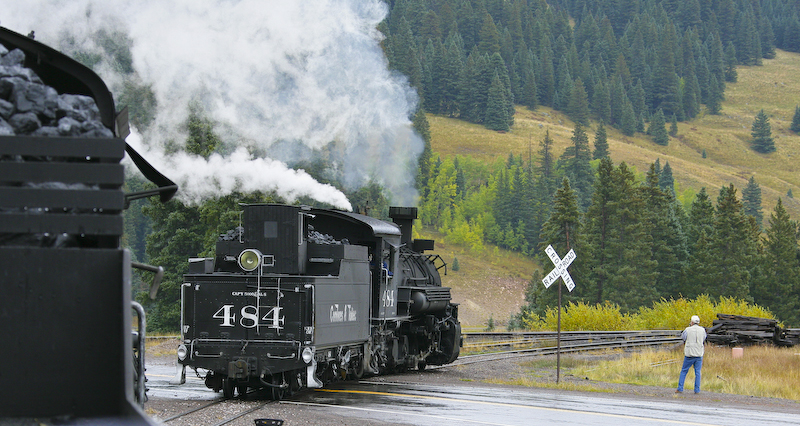
The lead motor detached and went on to other duties.
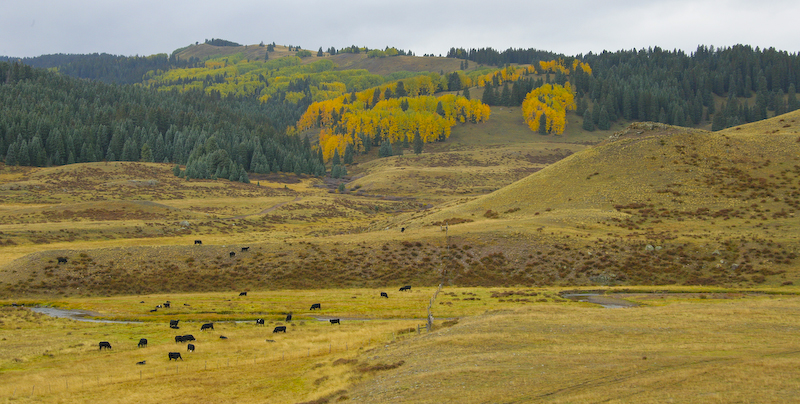
The upper meadows were lush and were heavily populated with cattle.
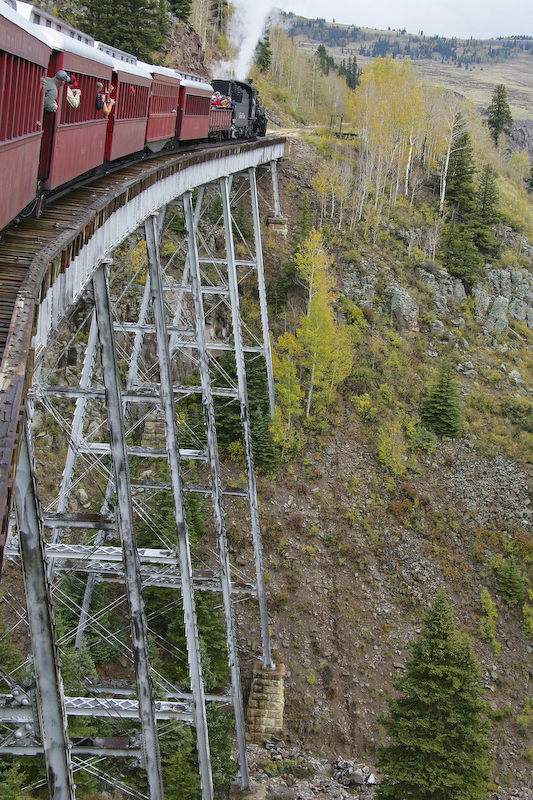
We crossed Cascade trestle that was 137 feet tall.
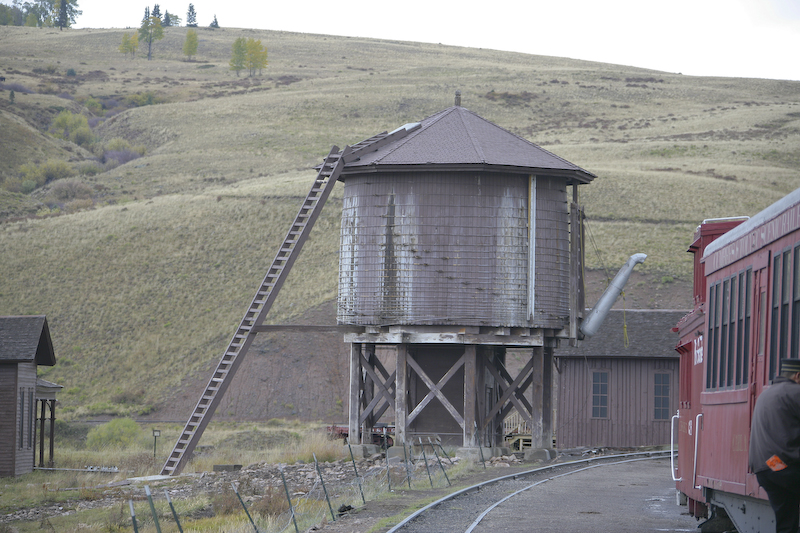
Our destination was Osier where we had lunch. Osier was also a way station that had crew quarters and a watering station.
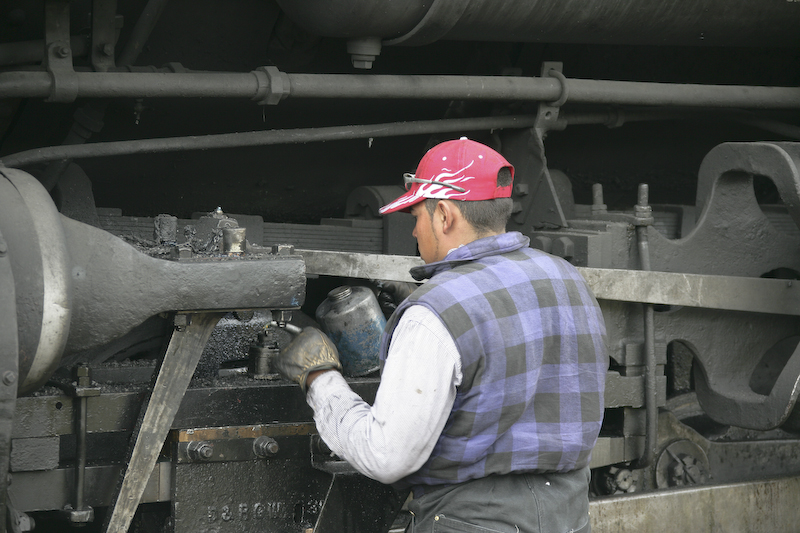
One of the motormen manually oils parts of the locomotive.
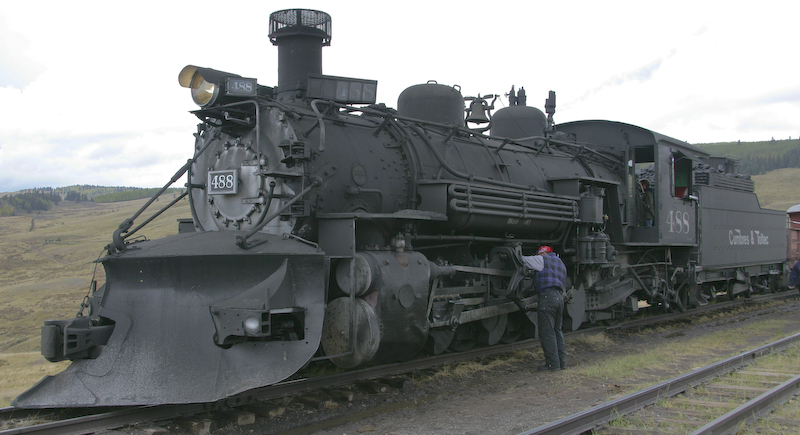
This motor is headed to Antonito (as opposed to back to Chama). Both trains meet at Osier.
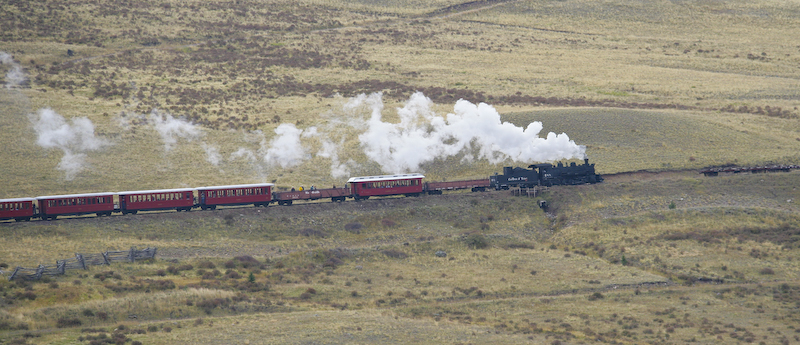
The Antonito train heads out after lunch.
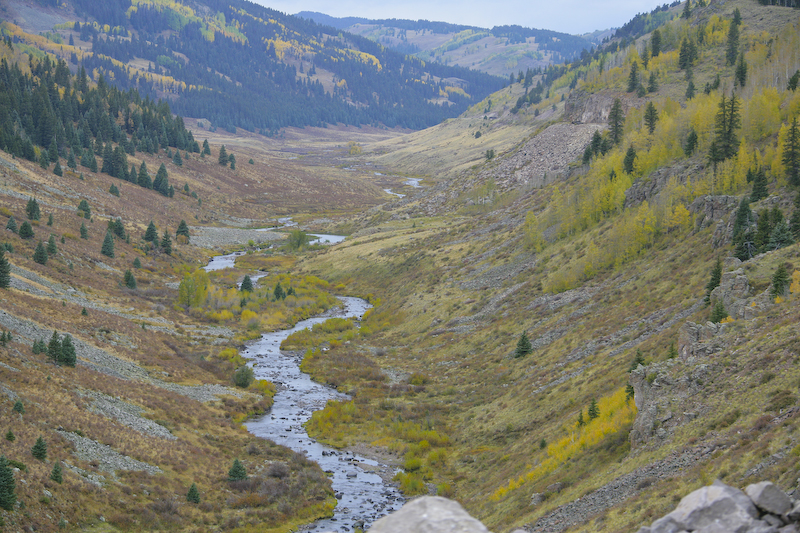
The high valleys were starting to turn fall colors. This is Rio de Los Pinos.
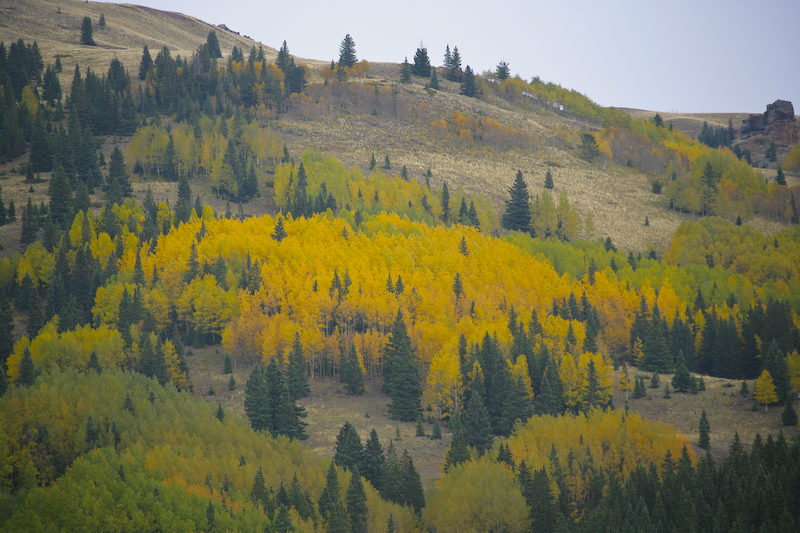
The fall colors were more pronounced as the light improved on the return to Chama. The rain continued, but there were periods where the sun broke through.
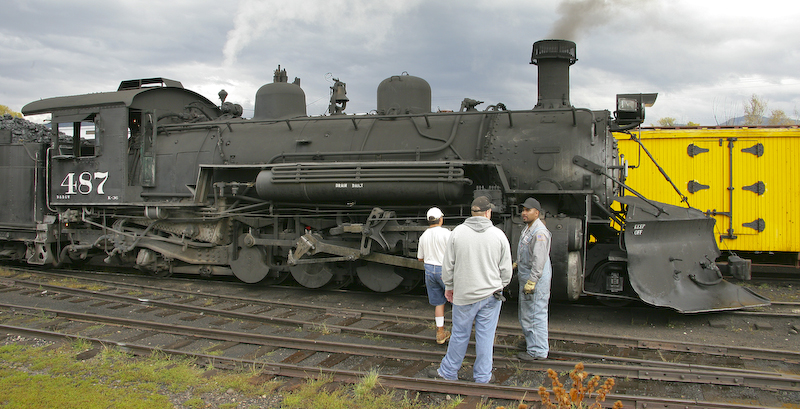
Back in Chama Station, the locomotive engineer (right) answers questions from the passengers.
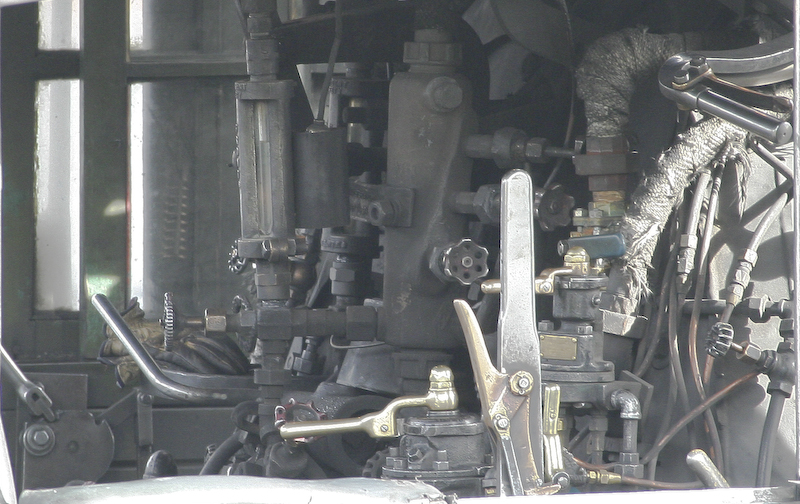
I got this long distance shot of the controls in the cab after the engineer had left. There are LOTS of knobs, valves and levers!
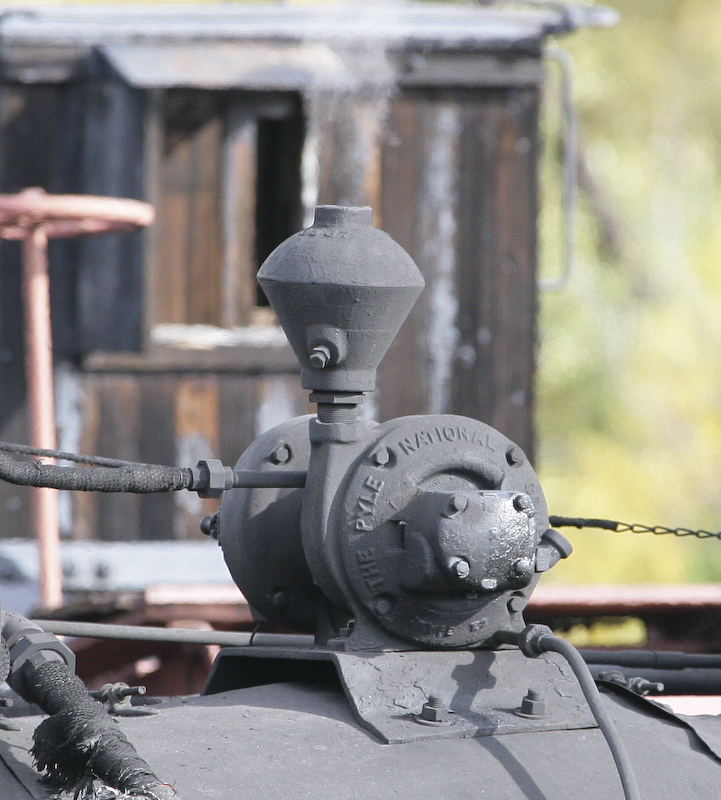
Here is a shot of a steam powered oil pump on the top of the locomotive. This pump provides the lubrication for the major running components of the engine.
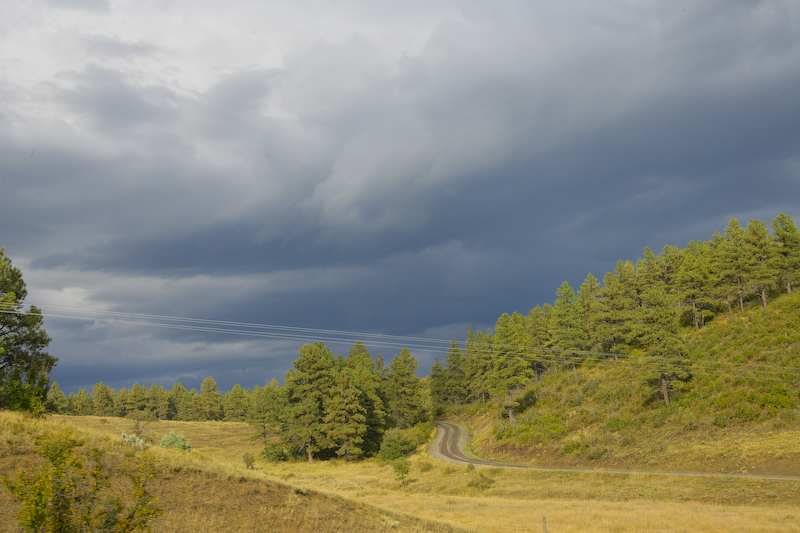
On the return trip to Pagosa Springs, the weather started acting up again. Note the dark thunderclouds on the horizon.
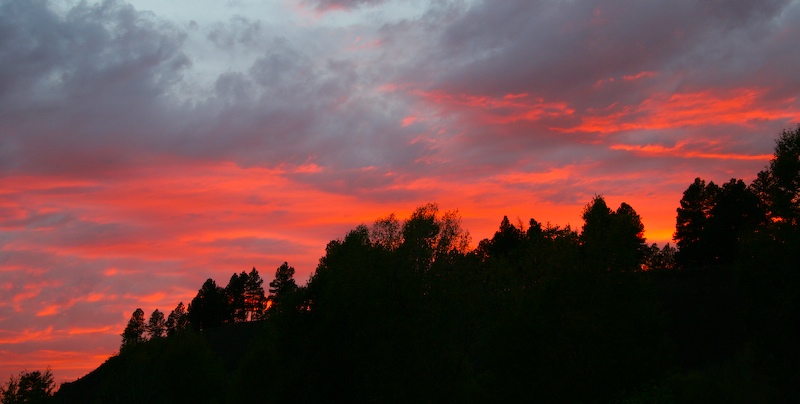
After all the rain, we actually got a decent sunset. This photo was taken from our cabin porch.
The Cumbres and Toltec was all that it was cracked up to be. Despite the rain and clouds, the scenery was off the chart. The staff was friendly and the lunch was good.
Back to the Road Trip Home Page